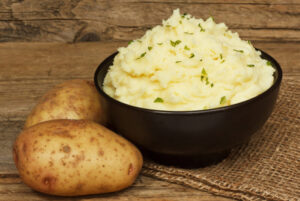Disodium Dihydrogen Pyrophosphate (SAPP) is a white crystalline powder that is soluble in water. It’s a type of inorganic compound widely used in the food industry as a leavening agent, pH control agent, and importantly, as an antioxidant. It is commonly referred to as sodium acid pyrophosphate, and its main role as an antioxidant is to prevent the oxidation process in food products.
What’s the Science behind Disodium Dihydrogen Pyrophosphate Antioxidant?
Disodium Dihydrogen Pyrophosphate as an Antioxidant: Mechanism
The antioxidant ability of Disodium Dihydrogen Pyrophosphate is primarily related to its chelating properties. Here’s a more specific explanation of the mechanism:
Chelating Metal Ions: Metal ions like iron and copper can catalyze oxidation reactions in food by promoting the formation of free radicals. SAPP can chelate these metal ions, meaning it forms a ring-like complex around them. The chemical formula for this chelating reaction can be represented as:
SAPP+M2+→SAPP-M2+
where M is a metal ion. By binding these metal ions, SAPP neutralizes their ability to catalyze oxidative reactions.
Neutralizing Free Radicals: Oxidation often involves the formation of free radicals, which are highly reactive species that can lead to chain reactions causing rancidity and spoilage. SAPP can neutralize these free radicals by donating electrons, effectively terminating the chain reaction. The process can be represented as:
SAPP+R⋅→SAPP-R
where R· is a free radical.
Preventing Discoloration: In products like potatoes, the browning effect is often caused by the Maillard reaction or enzymatic browning. SAPP can chelate the metal ions that catalyze these reactions, thereby reducing the browning effect.
Stabilizing pH Levels: SAPP can also help in maintaining the pH levels of food products. By controlling the pH, it ensures that the environment is not conducive to oxidation reactions.
Synergistic Effect with Other Antioxidants: Often, SAPP is used in conjunction with other antioxidants like ascorbic acid to provide a synergistic effect in preventing oxidation.
What Foods Require Disodium Dihydrogen Pyrophosphate’s Antioxidant Property?
 Potato Products: Used in frozen and dehydrated potato products to retain color and freshness.
Potato Products: Used in frozen and dehydrated potato products to retain color and freshness.
Canned Seafood: Preserves the natural color and flavor of canned tuna and other seafood.
Meat Products: Prevents spoilage and retains freshness in processed meats like sausages and hot dogs.
Baked Goods: Enhances texture and extends shelf life in bread, cakes, and pastries.
Dairy Products: Used in processed cheese and cream to prevent oxidation.
Beverages: Maintains color in fruit juices and flavored drinks.
Cereals: Extends shelf life and retains crunchiness in breakfast cereals.
Snack Foods: Used in chips and other fried snacks to reduce rancidity.
Ready Meals: Enhances preservation and taste in pre-packaged meals.
Desserts: Used in puddings and other desserts to maintain consistency and flavor.
Without adding SAPP, these foods might lose their color, taste, and nutritional value, leading to decreased shelf life and consumer appeal.
Is Disodium Dihydrogen Pyrophosphate Safe?
Yes, Disodium Dihydrogen Pyrophosphate is considered safe when used in accordance with the recommended guidelines. It is recognized by the Food and Drug Administration (FDA) and the European Food Safety Authority (EFSA) as a food additive that can be safely consumed.
Disodium Dihydrogen Pyrophosphate’s role as an antioxidant has made it an essential additive in the food industry. From preserving the color and flavor of potato products to enhancing the shelf life of baked goods and beverages, its application is vast. For inquiries about the remarkable Disodium Dihydrogen Pyrophosphate antioxidant, please don’t hesitate to reach out to us at [email protected].




